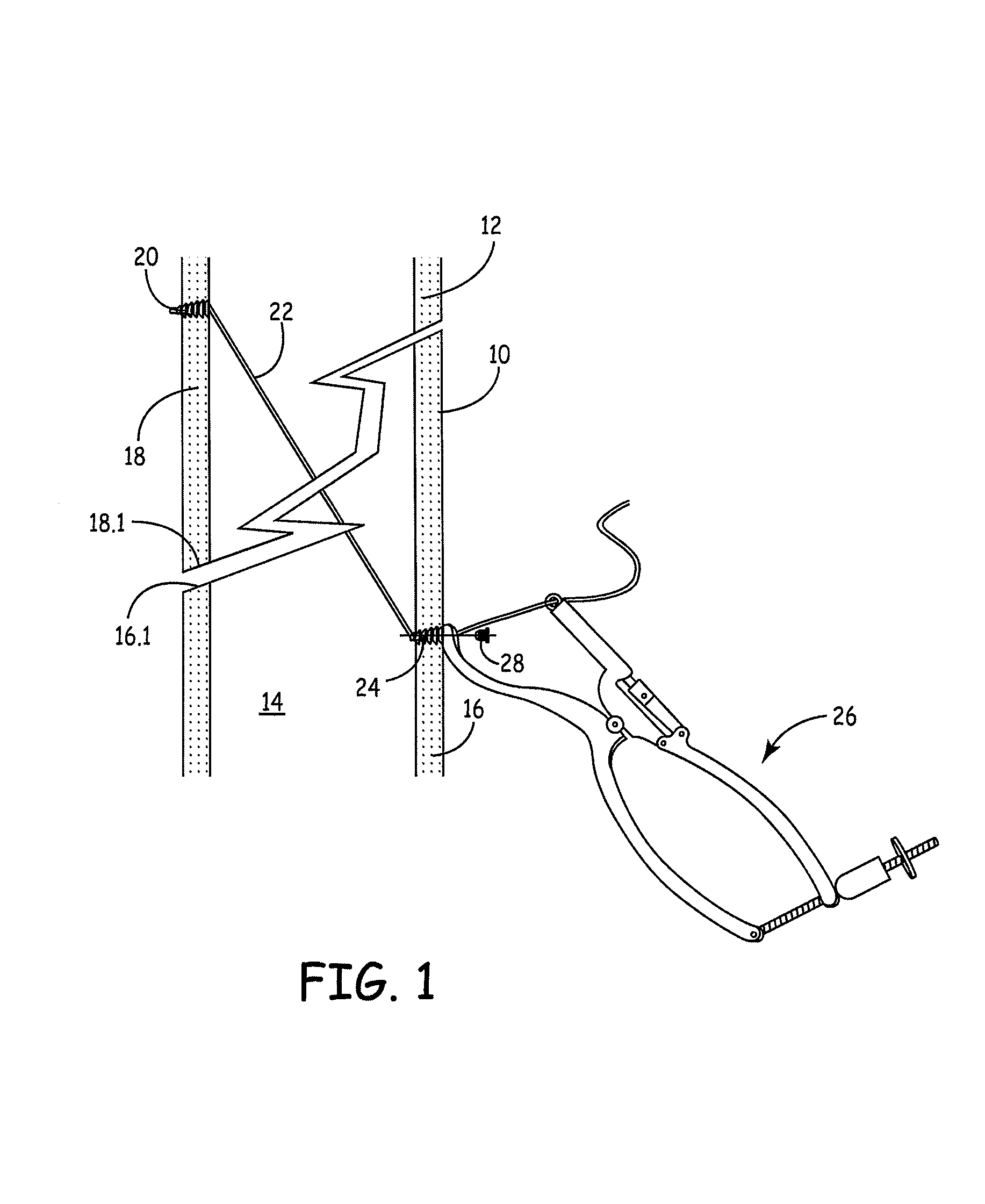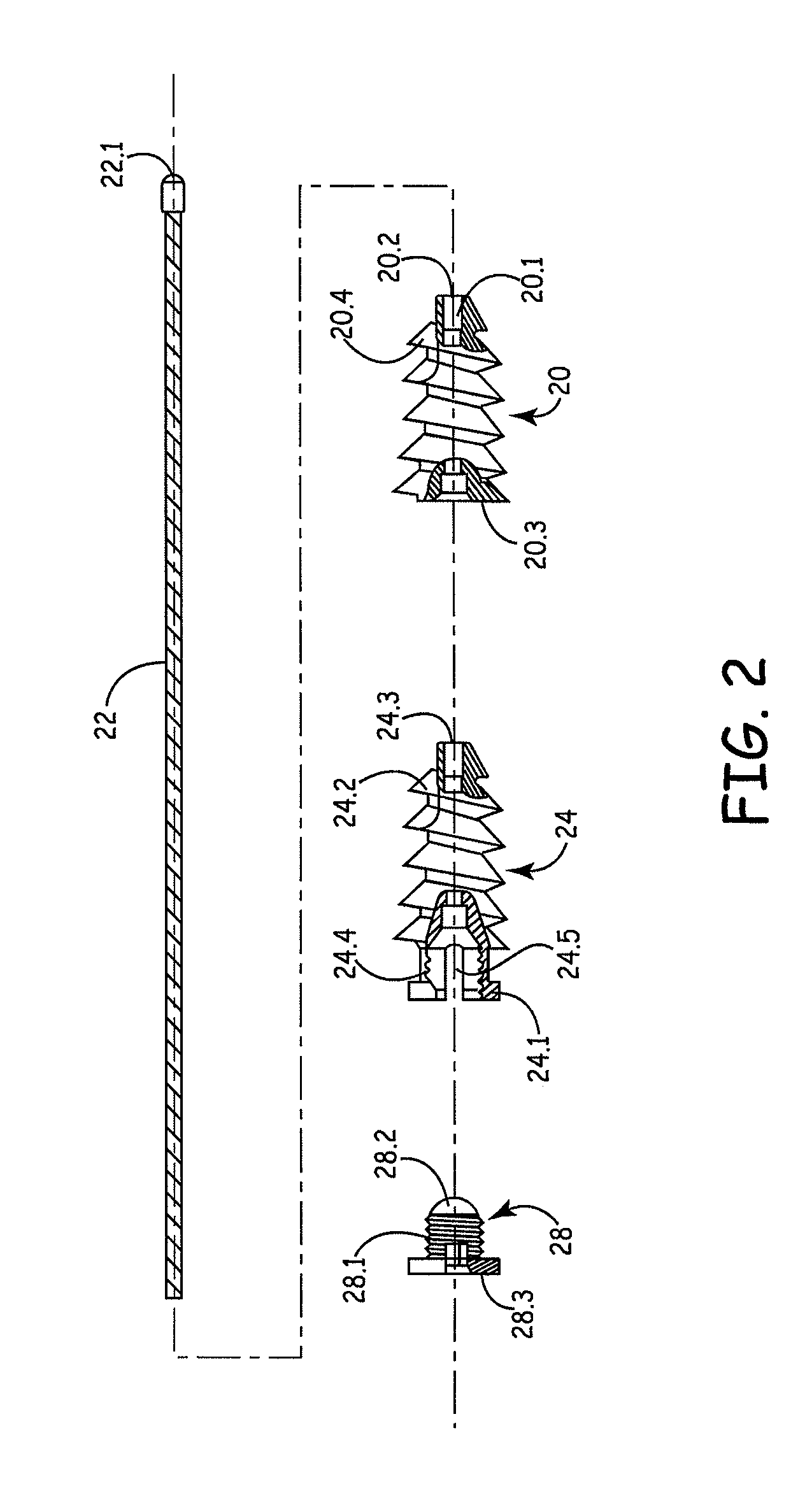Internal cord fixation device
a fixation device and cord technology, applied in the field of internal cord fixation devices, can solve the problem that the cord does not prevent the bone, and achieve the effect of preventing or reducing particulate shedding and providing compressive resistan
- Summary
- Abstract
- Description
- Claims
- Application Information
AI Technical Summary
Benefits of technology
Problems solved by technology
Method used
Image
Examples
Embodiment Construction
[0050]As used herein, “cord” refers to any of a variety of materials that are strong in tension, inelastic, flexible, and biocompatible. If desired, the cord may be made of an organic suture material, or may be made from bioabsorbable materials such as poly (lactic acid). Preferably, however, the cord is made of a metal wire, such as in the form of a metal wire braid for improved flexibility. Stainless steel is an appropriate and preferred material. The cord is sufficiently flexible to substantially straighten within the bone interior when placed under sufficient tension to draw bone fragments together, that is, under a tension of about 5 or more newtons. The cord may be made of a single material or composite, or may include sections of different materials chosen for their particular properties such as strength, flexibility, and radiopacity to enable the cords to be readily visualized by fluoroscopy.
[0051]The cord of the present invention is sufficiently flexible as to exhibit subst...
PUM
 Login to View More
Login to View More Abstract
Description
Claims
Application Information
 Login to View More
Login to View More - R&D
- Intellectual Property
- Life Sciences
- Materials
- Tech Scout
- Unparalleled Data Quality
- Higher Quality Content
- 60% Fewer Hallucinations
Browse by: Latest US Patents, China's latest patents, Technical Efficacy Thesaurus, Application Domain, Technology Topic, Popular Technical Reports.
© 2025 PatSnap. All rights reserved.Legal|Privacy policy|Modern Slavery Act Transparency Statement|Sitemap|About US| Contact US: help@patsnap.com



